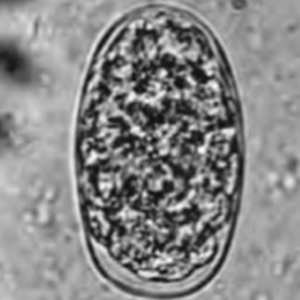Members of the genus Molineus are nematodes which affect the duodenum, pylorus, pancreas and mesenteric tissue of non-human primates (Cogswell, 2007). Different species of Molineus have been identified, namely Molineus vexillarius, M. elegans, M. vogelianus, M. midas and M. torulosus. However, only M. torulosus is known to be pathogenic in non-human primates (Cogswell, 2007).
Epidemiology
Molineus nematodes can be found in Central and South America and in Africa. Both New World Monkeys and Prosimians can be affected by Molineus spp., namely (Cogswell, 2007; Bacalhao et al., 2016; Bueno et al., 2017; Rondón et al, 2021):
- Squirrel monkeys (Saimiri) and capuchin monkeys (Cebus and Sapajus spp.) by Molineus torulosus and Molineus elegans;
- Marmosets (Callitrichidae) by Molineus vexillarius;
- Howler monkeys (Alouatta ) by Molineus elegans;
- Pottos (Perodicticus potto) by Molineus vagelianus;
- Owl monkeys (Aotus) by Molineus torulosus;
- Golden-handed tamarins (Saguinus midas) by Molineus midas.
Description
Molineus eggs have a typical non-embryonated strongyle egg morphology: they are oval, with a thick outer membrane, a morula and non-parallel lateral sides. They also have characteristics of Trichonstrondyloidea eggs with one of their side being thinner, and contain a dense morula of 16 to 32 blastomeres. They measure 40 to 52 µm long and 20 to 29 µm large. It is impossible to distinguish different species of Molineus by ovodiagnosis (Cogswell, 2007).
Differential diagnosis
Differential diagnosis includes other species of Trichostrongyloidea nematodes, namely Nochtia nochti. Moreover, it should not be confused with other non-embryonated strongyle eggs.
Clinical significance
Molineus torulosus infection can cause ulcerative or hemorrhagic enteritis and serous nodules in the intestines. Chronic pancreatitis has also been reported (Bacalhao et al., 2016).
Prophylaxis and treatment
No specific treatment for Molineus infection has been described in non-human primates (Cogswell, 2007). The implementation of hygienic measures seems to be sufficient to control contaminations.


